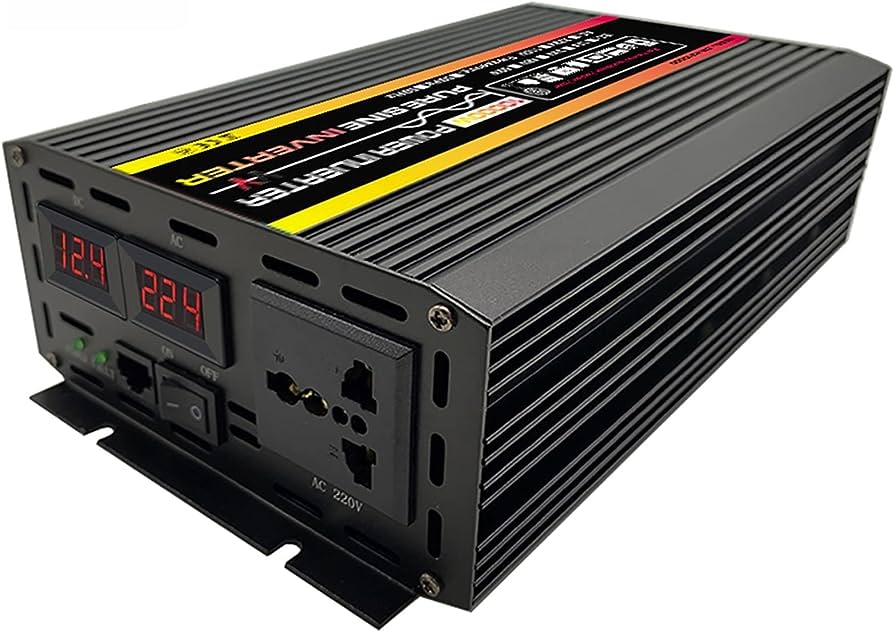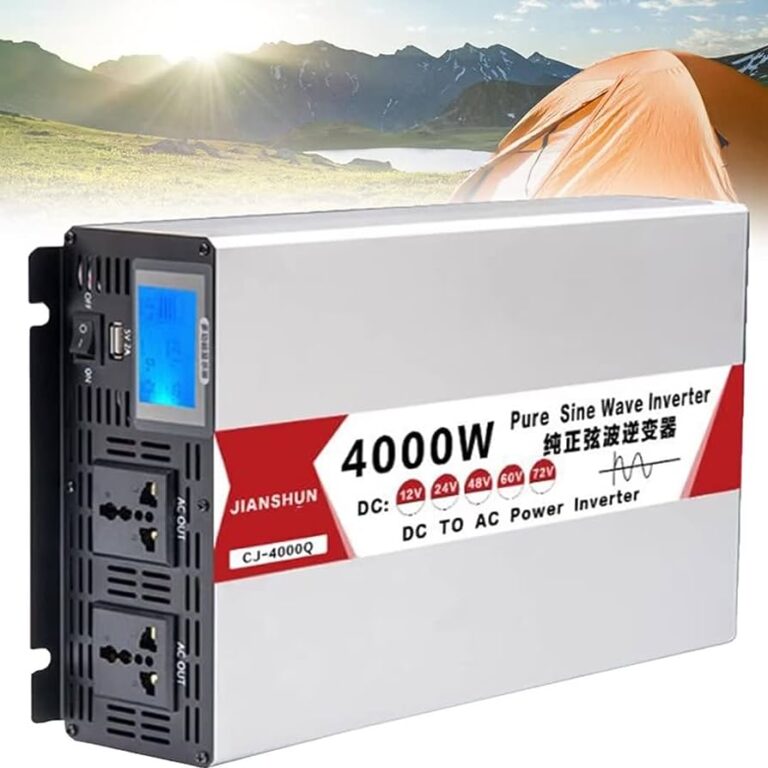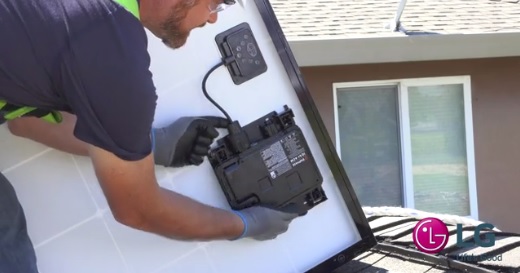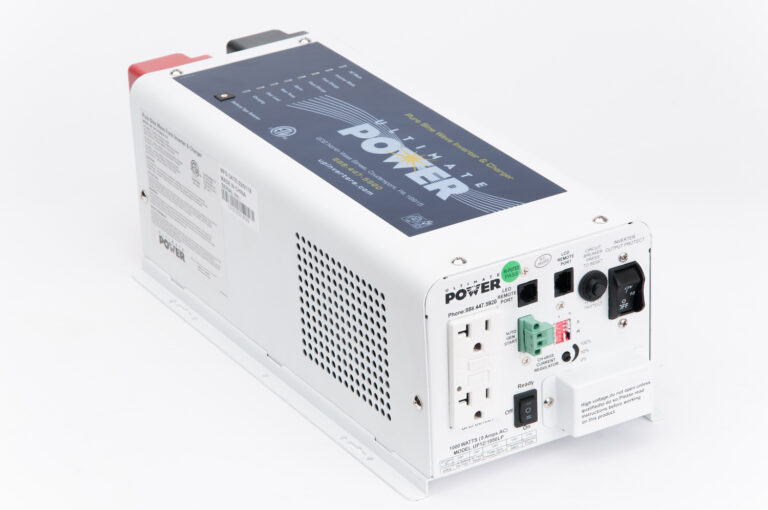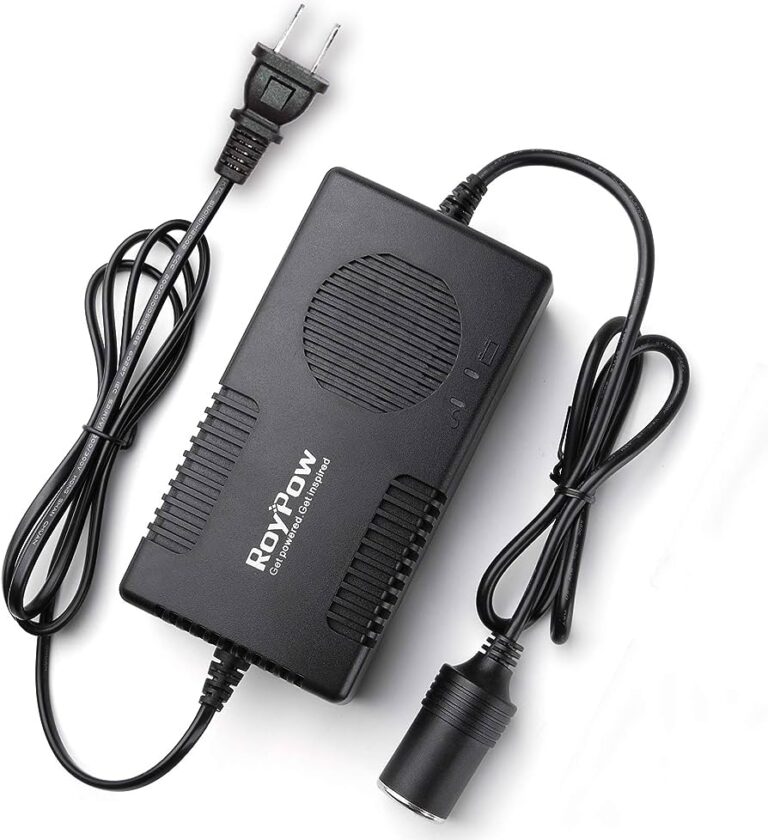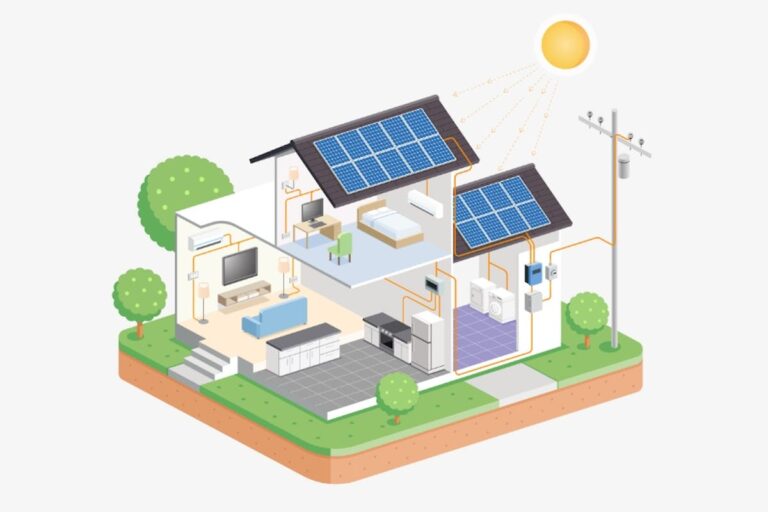How to Wire a Power Inverter in a Truck: Master the Art!
To wire a power inverter in a truck, connect the positive cable from the inverter to the positive terminal of the truck’s battery and the negative cable to the truck’s grounding point. Integrating a power inverter into your truck allows you to convert the vehicle’s DC power to AC power, making it a versatile solution for powering appliances and devices while on the road.
Whether you need to charge your laptop, run a small refrigerator, or power tools, a power inverter provides a convenient source of electricity. In this guide, we will walk you through the process of wiring a power inverter in your truck, ensuring a safe and reliable power supply.
Keep reading to learn how to set up a power inverter in your truck effectively.
Selecting The Right Power Inverter
Wiring a power inverter in a truck requires careful selection and installation. Ensure to follow proper guidelines and choose the right power inverter for your needs. Proper wiring will provide efficient power supply for your truck.
To maximize the efficiency and functionality of your truck’s power inverter, it’s essential to choose the right one that matches your specific power needs. Here are the steps to help you select the appropriate power inverter for your truck:
Determine Your Power Needs For The Truck:
- Evaluate the electrical appliances and devices you plan to power with the inverter in your truck.
- Make a list of all the devices, including their power ratings or wattage requirements.
- Consider both the continuous power (the power required for normal operation) and the surge power (the power required during startup or initial power demands) of each device.
- Take into account any additional devices you may want to power in the future.
Calculate The Wattage Requirements:
- Add up the wattage requirements of all the devices on your list to determine the total wattage you need.
- Consider any potential power spikes or surges when calculating the wattage requirements.
- It’s advisable to add a safety margin to your calculations by selecting an inverter with a slightly higher wattage rating than your total requirements.
Choosing The Appropriate Power Inverter For Your Needs:
- Look for an inverter that can handle the total wattage requirements of the devices you want to power.
- Consider the inverter’s peak power rating, which represents the ability to handle temporary power surges.
- Ensure the inverter has sufficient AC outlets to accommodate all your devices.
- Take into account the inverter’s efficiency rating, as a higher efficiency means less energy loss during the conversion process.
- Consider the inverter’s size and weight, especially if space is limited in your truck.
- Look for additional features such as built-in safety protections, USB ports, and compatibility with your truck’s electrical system.
Remember to choose a power inverter that meets your specific power needs, ensuring it can safely and efficiently power all your devices while on the road. Taking the time to select the right power inverter will ensure a reliable and convenient power source for your truck.
Essential Tools And Materials
To wire a power inverter in a truck, you will need essential tools and materials such as wire cutters, crimping tool, electrical tape, and a power inverter itself. These items will assist you in safely and effectively installing the inverter, ensuring a reliable source of power while on the road.
Gather The Necessary Tools And Materials:
Having the right tools and materials is essential when it comes to wiring a power inverter in your truck. Here are some items you’ll need to gather before getting started:
- Power inverter: Choose an inverter that suits your power needs and is compatible with your truck’s electrical system.
- Wires: Ensure you have the appropriate gauge wires for your inverter installation. Thicker wires are required for higher power loads.
- Wire connectors: Use quality connectors to ensure secure and reliable connections between wires or components.
- Fuse holder and fuses: Install a fuse holder close to the battery and use fuses that match your inverter’s power rating. This helps protect your system from overcurrent.
- Battery cables: Invest in heavy-duty battery cables to connect the power inverter to the battery.
- Wire strippers and crimping tools: These tools are necessary for stripping insulation from wires and crimping connectors securely.
- Electrical tape: Use electrical tape to insulate and protect wire connections.
- Screwdrivers and wrenches: Have a set of these tools on hand for removing screws and tightening connections.
- Multimeter: A multimeter is useful for measuring voltage, current, and continuity to ensure proper electrical connections.
- Drill and bits: If you need to install additional components or make holes for wiring, a drill and appropriate bits will come in handy.
- Cable ties and mounting brackets: Use cable ties to secure wires and prevent them from hanging loose. Mounting brackets can help secure the power inverter and other components in place.
Remember to have all the necessary tools and materials ready before proceeding with the power inverter installation.
Understanding The Different Types Of Wires And Connectors:
When wiring a power inverter in your truck, it’s crucial to understand the different types of wires and connectors to ensure proper installation. Here are some key points to keep in mind:
- Gauge of wires: The gauge of the wire refers to its thickness. Smaller gauge numbers indicate thicker wires and can handle higher current loads. Be sure to choose the appropriate gauge based on your inverter’s power requirements.
- Positive and negative wires: Power inverters require both positive and negative connections. The positive wire is usually red and should be connected to the positive terminal of the battery or power source. The negative wire, often black, connects to the negative terminal.
- Crimp connectors: Crimp connectors are used to join wires together securely. They come in various types, such as butt connectors, ring terminals, and spade terminals. Make sure to choose connectors that match the wire gauge and use crimping tools to crimp them properly.
- Soldering: Although not always necessary, soldering can provide extra strength and reliability to wire connections. Use soldering tools and heat shrink tubing to protect soldered connections from moisture and damage.
- Terminal blocks: Terminal blocks are useful for connecting multiple wires together or for making future modifications easily. They provide a convenient way to organize and secure connections.
- Polarized connectors: Some power inverters come with polarized connectors to prevent incorrect connection. Pay attention to the positive and negative terminals when using polarized connectors.
Understanding the various wires and connectors involved in the installation process will ensure a safe and secure power inverter setup in your truck.
Safety Precautions When Working With Electricity:
When dealing with electricity, it’s crucial to prioritize safety. Follow these precautions to minimize the risk of accidents or damage:
- Disconnect the battery: Before beginning any electrical work, disconnect the negative terminal of the battery to prevent accidental short circuits or electrical shocks.
- Use insulated tools: Make sure to use insulated tools when working with electrical connections. This reduces the risk of electrical shock.
- Avoid loose connections: Ensure all wire connections are secure and tight. Loose connections can lead to heat buildup and potential fire hazards.
- Choose the right fuse: Use a fuse with the appropriate rating to protect your power inverter and wiring from excessive current. Consult the inverter’s manual or an expert for guidance.
- Avoid overloading: Never exceed the power rating of your power inverter or wiring. Overloading can cause overheating and damage to the system.
- Route wires safely: Avoid running wires near hot surfaces, moving parts, or sharp edges. Use grommets or conduit to protect the wires from potential damage.
- Insulate exposed wires: Cover exposed wire connections with electrical tape or heat shrink tubing to prevent short circuits or accidental contact.
- Work in a well-ventilated area: Adequate ventilation is important, especially if your power inverter generates heat during operation.
- Follow manufacturer instructions: Always refer to the manufacturer’s instructions and guidelines when installing or operating your power inverter. This ensures proper installation and safe operation.
By following these safety measures, you can minimize risks and ensure a safe and successful power inverter installation in your truck.
Preparing The Truck For Installation
Make sure to properly prepare your truck for the installation of a power inverter. With careful wiring and attention to detail, you can ensure a successful installation and optimum performance from your power inverter while on the road.
Finding The Ideal Location For The Power Inverter
When it comes to installing a power inverter in your truck, finding the ideal location is crucial. Here are some key points to consider:
- Accessibility: Choose a location that is easily accessible, allowing you to check and maintain the inverter without any hassle.
- Ventilation: Ensure that the chosen spot has good ventilation to prevent the inverter from overheating. Consider areas with adequate airflow or install additional fans if necessary.
- Protection: Look for a secure spot that minimizes the risk of damage from shifting cargo or accidental bumps. Consider mounting the inverter to a solid surface to provide stability and protection.
Measuring And Cutting The Wires To The Correct Length
To wire the power inverter properly, accurately measuring and cutting the wires is essential. Here are the steps to follow:
- Measure: Determine the distance between the battery and the inverter, taking into account any bends or obstructions in the path. Create a list of the required wire lengths for each connection point.
- Size the wires: Consider the power requirements of the inverter to determine the appropriate wire gauge. Thicker wires are necessary for higher power loads to prevent voltage drop.
- Cut the wires: Using a wire cutter/stripper, cut the wires to the measured lengths, ensuring clean and precise cuts. Remove the insulation from the wire ends to expose the bare copper for connection.
Properly Grounding The Power Inverter
Proper grounding is critical for the safe and effective operation of the power inverter. Follow these guidelines:
- Location: Identify a suitable grounding point near the inverter location, such as a metal chassis area with a direct path to the negative battery terminal.
- Ground wire: Select an appropriately sized wire for the grounding connection. Make sure it is long enough to reach the grounding point without strain or tension.
- Clean the connection points: Remove any rust, paint, or impurities from the grounding point and the wire’s connection point to ensure a secure and reliable connection.
- Secure connection: Attach one end of the ground wire to the inverter’s grounding terminal and the other end to the chosen grounding point using a grounding bolt or clamp. Tighten the connections to guarantee a snug fit.
Remember to review the manufacturer’s instructions for any specific requirements or recommendations regarding the location, wire sizing, and grounding of your particular power inverter model.
Wiring The Power Inverter
Wiring a power inverter in a truck is a straightforward process that requires connecting it to the battery and ensuring proper grounding. This step-by-step guide will help you wire your power inverter efficiently for optimal performance and safety.
So, you’ve decided to install a power inverter in your truck to conveniently power your devices on the go. Now it’s time to tackle the wiring process. In this section, we’ll guide you through connecting the power inverter to your truck’s battery, routing the cables safely and neatly, and making secure connections to avoid loose wiring.
Connecting The Power Inverter To The Truck’S Battery:
To ensure a smooth power supply and avoid any electrical mishaps, follow these steps when connecting your power inverter to your truck’s battery:
- Begin by disconnecting the negative terminal of your truck’s battery to prevent any accidental short circuits.
- Locate a suitable spot near the battery to mount the power inverter securely. Ensure there is enough space and ventilation to dissipate heat effectively.
- Identify the positive and negative terminals on your truck’s battery. Connect the positive terminal of the power inverter to the positive terminal of the battery, and then connect the negative terminal of the inverter to the negative terminal of the battery.
- Use appropriate gauge wiring for the connections, considering the power requirements of your inverter. It’s essential to use wires with proper insulation to prevent short circuits and ensure efficient power transfer.
- Double-check all connections to ensure they are secure and snugly fitted. Loose connections can lead to voltage drops or even damage your equipment.
Routing The Cables Safely And Neatly:
The way you route your cables can make a significant difference in the overall safety and appearance of your power inverter installation. Here’s what you need to keep in mind:
- Plan your cable routing path before making any permanent connections. Take into consideration factors like distance, cable length, and accessibility.
- Use zip ties or adhesive clips to secure the cables along the truck’s frame or existing wiring harness. This will prevent them from dangling or getting in the way of other components.
- Avoid routing the cables near moving parts or areas with excessive heat, such as the exhaust system.
- If possible, run the cables through existing wire channels to maintain a clean and professional installation.
- Ensure that there is enough slack in the cables to allow for movement and vibrations without straining the connections.
By following these guidelines, you can achieve a safe and organized wire routing arrangement, minimizing the risk of damage or interference with other components.
Making Secure Connections To Avoid Loose Wiring:
Properly securing the connections between your power inverter and the truck’s battery is crucial. Loose wiring can cause voltage drops, overheating, and even equipment failure. Here’s how you can make secure connections:
- Use terminal connectors that are appropriately sized for your cable gauge and snugly fit the battery terminals and inverter terminals.
- Strip off insulation from the wire ends before inserting them into the terminal connectors. This will ensure a proper electrical connection.
- Tighten the terminal screws firmly without over-tightening or stripping them. This will guarantee a solid and reliable connection.
- Consider using heat-shrink tubing or electrical tape to cover exposed connections and protect them from moisture, dust, and accidental contact.
- Periodically inspect your connections to ensure they remain tight and secure. Vibration and temperature fluctuations can sometimes loosen connections over time.
Making secure connections not only ensures optimal performance but also promotes safety and longevity for your power inverter setup.
Remember, improper wiring can lead to potential hazards and damage, so it’s always best to double-check your work and consult professional assistance if needed. Happy wiring, and enjoy the convenience of your newly installed power inverter in your truck!
Testing The Power Inverter
Learn how to wire a power inverter in your truck and test its functionality with these easy steps. Discover the power of inverter and how it can enhance your truck’s capabilities for various electrical needs.
Verifying The Functionality Of The Power Inverter:
To ensure that your power inverter is working properly before you hit the road, you’ll need to perform some tests. By following these steps, you can verify the functionality of your power inverter and make any necessary adjustments or repairs.
- Checking the power output using a multimeter:
- Connect the black lead of the multimeter to the negative terminal of the power inverter and the red lead to the positive terminal.
- Turn on the power inverter and set it to the desired output mode (AC or DC).
- With the multimeter set to measure voltage, check the output voltage of the power inverter. It should be within the expected range specified by the manufacturer.
- If the voltage reading is significantly lower or higher than expected, it may indicate a problem with the inverter. Check the connections and consult the manufacturer’s troubleshooting guide for further assistance.
- Troubleshooting common issues and solutions:
- Problem: No power output from the inverter.
- Solution: First, ensure that the inverter is properly connected to the truck’s battery and the wiring is correctly installed. Check the fuse box to see if a fuse needs replacement. If the connections and fuses are fine, the inverter might be faulty and may need to be replaced.
- Problem: Power inverter shuts off or overheats during use.
- Solution: Check the inverter’s ventilation and make sure it has enough airflow to prevent overheating. Also, ensure that the inverter is not being overloaded by the connected devices. If the problem persists, consult the manufacturer for further assistance.
- Problem: Inverter produces distorted or unstable power output.
- Solution: This could be due to a grounding issue. Check the ground connection of both the inverter and the truck battery. Ensure that the ground connections are secure and free of corrosion. If the problem persists, consult an expert electrician for further assistance.
Remember, it’s crucial to test the power inverter before relying on it to power your devices on the go. Regular tests and troubleshooting can help you identify and resolve any issues, ensuring a smooth and reliable power supply in your truck.

Credit: www.ebay.com
Maintenance And Safety Tips
Learn how to wire a power inverter in your truck with these essential maintenance and safety tips. Ensure optimal functionality and secure operation for your power inverter by following these easy-to-understand guidelines.
Regular Maintenance To Ensure Optimal Performance
- Clean and inspect the power inverter regularly: Dust and debris can accumulate on the power inverter, affecting its cooling and performance. Clean it with a soft brush or cloth to remove any obstructions.
- Check the power inverter’s cables and connectors: Examine the cables and connectors for any signs of wear or damage. If you notice any exposed wires or loose connections, replace or repair them immediately.
- Inspect the input and output connections: Ensure that the input and output connections are secure and free from corrosion. Loose or corroded connections can hamper the inverter’s performance.
- Keep the power inverter dry: Moisture can damage the power inverter, so make sure it is kept in a dry location. If you notice any signs of water damage, consult a professional technician.
- Use the power inverter regularly: Regular usage helps to maintain the power inverter’s optimal performance. If you leave it unused for an extended period, it may become less efficient.
- Check the cooling fan: If your power inverter has a cooling fan, check that it is working correctly. A malfunctioning fan can cause overheating and damage to the inverter.
Inspecting And Replacing Damaged Wires And Connectors
- Check for any frayed or damaged wires: Inspect the wires connected to the power inverter for any signs of fraying or damage. These wires should be in good condition to ensure safe operation.
- Examine the connectors: Inspect the connectors for any signs of wear or damage. If the connectors appear loose or broken, they should be replaced immediately.
- Use the appropriate gauge of wire: Ensure that you are using the correct gauge of wire for your power inverter. Using wires with a higher gauge than recommended can result in a drop in voltage and power loss.
Safety Precautions When Using The Power Inverter
- Follow the manufacturer’s instructions: Familiarize yourself with the manufacturer’s guidelines and safety precautions for using the power inverter. Adhering to these instructions will help prevent accidents and ensure safe operation.
- Avoid overloading the power inverter: Ensure that you do not exceed the power rating or maximum wattage capacity of your power inverter. Overloading can lead to overheating and damage to the inverter.
- Use proper grounding: Properly ground the power inverter according to the manufacturer’s instructions. This helps protect against electrical shock and ensures safe operation.
- Do not use the power inverter in wet conditions: Keep the power inverter away from water or damp areas to avoid electrical hazards. Using the inverter in wet conditions can cause electrocution or damage to the equipment.
- Disconnect the power inverter when not in use: When not using the power inverter, disconnect it from the truck’s battery to avoid draining the battery unnecessarily and to prevent any potential electrical mishaps.
Remember, regular maintenance and adherence to safety precautions are crucial for the efficient and safe operation of your power inverter.
Frequently Asked Questions
Looking to wire a power inverter in your truck? Find answers to commonly asked questions about this topic and get expert advice on how to do it effectively.
Can A Power Inverter Drain The Truck’S Battery?
- Yes, a power inverter can drain the truck’s battery if it is left running without the truck’s engine running.
- If you are using a power inverter while the truck is turned off, be mindful of the battery’s capacity and monitor its voltage regularly.
- To prevent unnecessary drain on the battery, consider using a power inverter with a low voltage alarm or an auto-shutdown feature.
Can I Use A Power Inverter While Driving?
- Absolutely! You can use a power inverter while driving to power various devices such as laptops, smartphones, or even small appliances.
- It’s important to keep the power inverter securely fastened in the truck to prevent any potential hazards or distractions while on the road.
- Most modern power inverters come with safety features like built-in fuses or overload protection, ensuring a smooth and safe driving experience.
How Do I Prevent Overheating Of The Power Inverter?
- Adequate ventilation is essential to prevent overheating of the power inverter. Make sure the inverter is installed in a well-ventilated area.
- Avoid placing the power inverter in direct sunlight or near any heat sources, as this can cause it to overheat.
- Regularly check the inverter’s temperature during use, and if it feels excessively hot or there is a burning smell, turn it off immediately and let it cool down before further use.
Frequently Asked Questions Of How To Wire A Power Inverter In A Truck
Can I Connect An Inverter Directly To A Battery?
Yes, you can connect an inverter directly to a battery.
How Do I Connect My Main Supply To My Inverter?
To connect your main supply to your inverter, follow these steps: 1. Turn off the main power supply. 2. Connect the inverter input terminals to the main supply using appropriate electrical cables. 3. Ensure proper insulation and tight connections to avoid any electrical hazards.
4. Turn on the main power supply and check if the inverter is functioning correctly. Remember to consult a professional electrician if you are unsure about the installation process.
How Many Batteries Do I Need To Run A 2000 Watt Inverter?
You will typically need at least two batteries to run a 2000 watt inverter.
How Do You Connect An Inverter Wire To A Battery?
To connect an inverter wire to a battery, follow these steps: 1. Start by identifying the positive (+) and negative (-) terminals on both the inverter and the battery. 2. Connect the positive wire from the inverter to the positive terminal of the battery.
3. Similarly, connect the negative wire from the inverter to the negative terminal of the battery. 4. Ensure that the connections are secure and tight to prevent any loose connections. That’s it! Your inverter is now connected to the battery.
Conclusion
Wiring a power inverter in your truck can provide countless benefits for your on-the-go lifestyle. With the right tools and knowledge, you can easily install this device and enjoy the convenience of having AC power in your vehicle. Remember to carefully plan the location for the inverter, ensuring it is easily accessible but out of the way.
Take your time to properly connect the cables and secure them to prevent any potential hazards. Test the system thoroughly before relying on it for your power needs. Whether you need to charge your laptop, power tools, or even run small appliances, a power inverter is a versatile accessory that can greatly enhance your truck’s functionality.
So, follow the steps outlined in this guide and get ready to unleash the power of your truck!

